Xi Xi is a Master’s student for the Energy Resource group. Xi Xi uses interdisciplinary methods such as quantitative modeling techniques and policy analyses to assess impacts on emissions, energy use, and other socio-economic indicators. Xi Xi looks forward to applying her knowledge in the context of international development. Xi Xi would also like to study how developing countries may be affected by or benefit from tensions between China and the West related to China’s emerging role in international development and international climate politics.
In RAEl she is researching US-China climate policy, decarbonization in Africa, and China’s role in Africa, among other topics.
Prior to joining ERG, Xi Xi earned a BA from Wellesley College. Xi Xi has worked for the Institute for Global Decarbonization Progress (iGDP), Abt, and the Massachusetts Clean Energy Center (MassCEC).
Xi Xi also enjoys traveling in their free time.
Meet the Laos Energy Modeling and Policy Analysis (Undergraduate!) Team:
The focus of this inter-disciplinary and inter-university research group is to develop sustainable energy, water, and land-use scenarios for Laos, and to work with local stake-holders on the costs and benefits for communities, the nation, and the regional commerce in energy, water, food, timber and other commodities.
Aaditee Kudrimoti
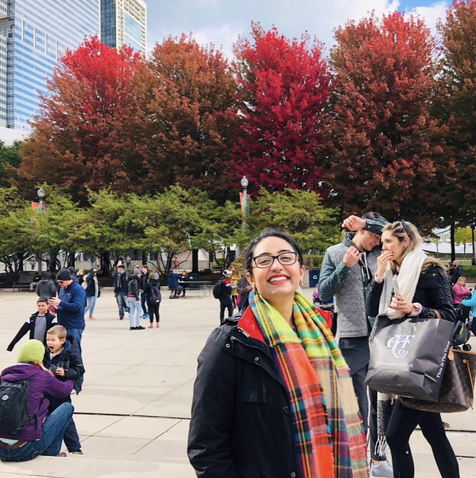 Bio: Aaditee is a fourth-year at UC Berkeley studying political science and public policy with a concentration in energy, development, and international relations. Aaditeeis originally from Tucson, Arizona, where she began to develop an interest in international environmental affairs. At UC Berkeley, Aaditeeis working on projects in the political economy of Chinese development finance, rural electrification, and collective action. Aaditeehas become especially interested in how the rise of renewable technology is influencing energy diplomacy around the world. She hopes to pursue a career in academia and public policy and work on governance tools to build the bargaining capacity of LDCs against MNCs, foreign state-owned enterprises, etc. on the subject of FDI and other types of investment. She sees SWITCH-Laos as having the potential to serve as a critical tool in assisting the increase of the Lao people’s bargaining power over FDI in the energy sector and thus their autonomy in determining their own economic development. Outside school, Aaditee’s interests include dance, food journalism, and cooking.
Bio: Aaditee is a fourth-year at UC Berkeley studying political science and public policy with a concentration in energy, development, and international relations. Aaditeeis originally from Tucson, Arizona, where she began to develop an interest in international environmental affairs. At UC Berkeley, Aaditeeis working on projects in the political economy of Chinese development finance, rural electrification, and collective action. Aaditeehas become especially interested in how the rise of renewable technology is influencing energy diplomacy around the world. She hopes to pursue a career in academia and public policy and work on governance tools to build the bargaining capacity of LDCs against MNCs, foreign state-owned enterprises, etc. on the subject of FDI and other types of investment. She sees SWITCH-Laos as having the potential to serve as a critical tool in assisting the increase of the Lao people’s bargaining power over FDI in the energy sector and thus their autonomy in determining their own economic development. Outside school, Aaditee’s interests include dance, food journalism, and cooking.
Alex Lathem
 Bio: Alex Lathem is a third-year undergraduate at Yale University. He is a physics major with several years of experience using programming languages, including Python SQL, C, and Bash, to analyze scientific data. Previous research projects Alex has worked on include astrometry of near-Earth asteroids and the creation of a Hubble curve through the analysis of Type Ia supernovae. Alex spent the summer of 2019 working on the SWITCH model for China, and is very excited to apply the skills he learned there to a version for Laos. Outside of research, Alex is also interested in music, video game design, linguistics, and history.
Bio: Alex Lathem is a third-year undergraduate at Yale University. He is a physics major with several years of experience using programming languages, including Python SQL, C, and Bash, to analyze scientific data. Previous research projects Alex has worked on include astrometry of near-Earth asteroids and the creation of a Hubble curve through the analysis of Type Ia supernovae. Alex spent the summer of 2019 working on the SWITCH model for China, and is very excited to apply the skills he learned there to a version for Laos. Outside of research, Alex is also interested in music, video game design, linguistics, and history.
Ashley Yip
 Bio: Ashley is a second-year undergraduate studying environmental science with an emphasis in global politics. She moved to New Mexico, where she developed an interest in environmental affairs. At UC Berkeley, she is involved in a pre-law association that helped her explore her interest in law and how she may integrate that into environmentalism. Off campus, she is working on a sex education reform project in Singapore with the Ministry of Education. She is constantly exploring the intersection between policy, education, and the environment. She hopes to return home to Singapore and pursue a career in international environmental policy or law within Southeast Asia. Ashley chose to work on SWITCH-Laos not only because greening ASEAN’s economic development is essential to tackling climate change, but also because she is familiar with the demographic. She has done research in regards to both urban and rural agriculture in Asia and the US, and led research for environmental management in business operations. Outside of school, her interests include climbing, hiking, piano, and camper vans.
Bio: Ashley is a second-year undergraduate studying environmental science with an emphasis in global politics. She moved to New Mexico, where she developed an interest in environmental affairs. At UC Berkeley, she is involved in a pre-law association that helped her explore her interest in law and how she may integrate that into environmentalism. Off campus, she is working on a sex education reform project in Singapore with the Ministry of Education. She is constantly exploring the intersection between policy, education, and the environment. She hopes to return home to Singapore and pursue a career in international environmental policy or law within Southeast Asia. Ashley chose to work on SWITCH-Laos not only because greening ASEAN’s economic development is essential to tackling climate change, but also because she is familiar with the demographic. She has done research in regards to both urban and rural agriculture in Asia and the US, and led research for environmental management in business operations. Outside of school, her interests include climbing, hiking, piano, and camper vans.
Rachel Ng

Bio: Rachel is a second-year Environmental Science and Data Science major. A Singapore-native, Rachel describes that SWITCH-Laos extremely important to her because it is an important step towards the energy security of Southeast Asia. She believes that the sustainable electrification of Southeast Asia is key to regional grid stability and energy trade. She is pursuing SWITCH-Laos as critical in leading the way towards sustainable electrification. Rachel is interested in the intersectionality between climate change and community, exploring how community based issues caused by climate change can be alleviated through data. Furthermore, Rachel is currently concerned about equal access to education and volunteers weekly as a mentor to elementary school students. In the future, she hopes to return to Singapore and guide environmental change through creating an ecosystem of sustainable communities and businesses. Her hobbies include dance, rock climbing and water sports.
马子明 Ziming Ma
博士生 Ph.D Student
清华大学电机工程与应用电子技术系
Dept. Electrical Engineering and Applied Electronic Technology
Tsinghua University
Ziming is a visiting doctoral student who will be working on clean energy science, technology, and markets in and for China as part of RAEL’s work with several partner institutions in China.
Samira Siddique is an MS/PhD candidate in the Energy and Resources Group. Her studies focus on the interconnected social, economic, and physical processes of urbanization and climate change in Asia. She was previously an international development researcher at Mathematica Policy Research, where her work included an evaluation of the Global Protocol for Community-scale Greenhouse Gas Emissions in cities worldwide. Prior to that, she was a researcher at the International Centre for Climate Change and Development in Dhaka, Bangladesh, and at the Centers for Disease Control and Prevention. She received her BA from Wesleyan University in the College of Social Studies and the College of the Environment. Samira has interests in energy in conflict settings, and in urban climate adaptation.
A 2018 paper summarizing her research focus can be found in The Dhaka Tribune, here, and in the RAEL Publications Directory.
Gang He is now an Assistant Professor in the
Stony Brook University
E‑mail: Gang.He [at] stonybrook.edu
While a doctoral student in RAEL and ERG, Gang He was also a Visiting Faculty Affiliate for the
China Energy Group, Energy Technologies Area, at Lawrence Berkeley National Laboratory, as well as an Assistant Professor in the Department of Technology and Society, at Stony Brook University. He has worked with the China Energy Group since 2011. His work focuses on energy modeling, energy economics, energy and climate policy, energy and environment, domestic coal and power sectors and their key role in both the global energy supply and in international climate policy framework. He also studies other interdisciplinary aspects of global climate change and the development of lower-carbon energy sources.
Prior to Berkeley, he was a research associate with Stanford University’s Program on Energy and Sustainable Development from 2008 to 2010.
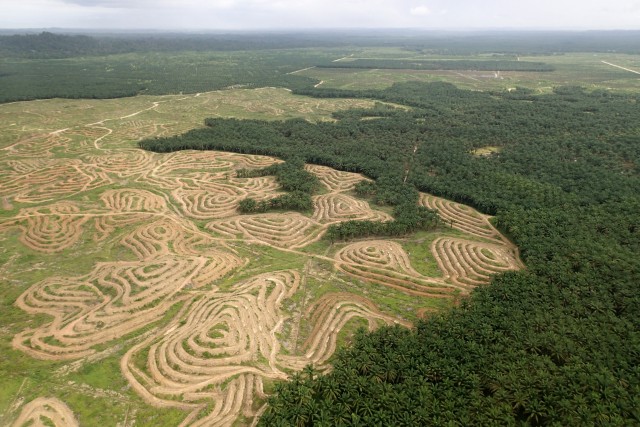
Keywords: off-grid energy; village power; decentralized energy, energy services, energy innovation.
Overview:
Two critically important and interlinked challenges face the global community in the 21st century: the persistence of widespread energy poverty and the resulting lost economic opportunity; and intensifying human-driven climate disruption. These crises are inexorably linked through the energy technology systems that have so far provided the vast majority of our energy: biomass and fossil fuels. Both the energy service crisis and the climate crisis have become increasingly serious over the past decades, even though we have seen greater clarity over the individual and social costs that each has brought to humanity.
The Sustainable Energy Imperative:
The correlation between access to electricity and a wide range of social goods is overwhelming. However, access to improved energy services alone does not provide a surefire pathway to economic opportunity and an improved quality of life. In Figure 2 we show the correlations that exist between electricity access across nations and a variety of measures of quality of life, such as the Human Development Index (a measure of well-being based in equal thirds on gross national income, life expectancy, and educational attainment). Other indicators studied include gender equality in educational opportunity, and the percentage of students who reach educational milestones. All of these indices improve significantly and roughly linearly with access to electricity. At the same time, the percentage of people below the poverty line, and childhood mortality, both decline with increasing energy access1.
Figure 1: A village micro-grid energy and telecommunications system in the Crocker Highlands of Sabah, Malaysian Borneo. The system serves a community of two hundred, and provides household energy services, telecoms and satellite (dish shown), water pumping for fish ponds (seen at center) and for refrigeration. The supply includes micro-hydro and solar generation (one small panel shown here, others are distributed on building rooftops). Photo credit: Daniel M. Kammen.
Figure 2: The Human Development Index (HDI) and various additional metrics of quality of life plotted against the percentage of the population with electricity access. Each data point is country level data a specific point in time. For additional data, see Alston, Gershenson, and Kammen, 20151.
Today the gap between global population and those with electricity access stands at roughly 1.3 billion, with energy services for the unelectrified coming largely from kerosene and traditional biomass, including dung and agricultural residues. This ‘access gap’ has persisted as grid expansion programmes and population have grown.
Grid expansion has roughly kept pace with the increase in the global population. About 1.4 billion people in 2013 are completely off-grid, and many ostensibly connected people in the developing world experience significant outages that range from 20–200+ days a year. The majority of these off-grid residents are in rural and underserved peri-urban areas. Current forecasts are that this number will remain roughly unchanged until 2030, which would relegate a significant portion of the population and the economies of many of the neediest countries on earth to fragile, underproductive lives with less options than they could otherwise have. Traditional grid extension will be slowest to reach these communities. Unless the advances in both energy and information systems that have occurred over the past decade are more widely adopted, there will be little if any chance to alter this trend.
Advances in off-grid systems
Recently we have seen an emergence of off-grid electricity systems that do not require the same supporting networks as the traditional forms of centralized power generation. These technological innovations are as much based on information systems as they are directly about energy technology. While traditional electricity grids can gradually pay off (amortize) the costs of expensive generation, transmission and distribution capital equipment across many customers and across many decades, a new business model is needed to rapidly bring energy services to the rural and urban poor. Mini-grids and products for individual user end-use such as solar home systems have benefitted from dramatic price reductions and performance advances in solid state electronics, cellular communications technologies, electronic banking, and in the dramatic decrease in solar energy costs2. This mix of technological and market innovation has contributed to a vibrant new energy services sector that in many nations has outpaced traditional grid expansion.
The comparison between the utility model of central-station energy systems and this new wave of distributed energy providers is instructive. Traditional dynamo generators and arc lighting perform best at large scale, and they became the mainstay of large-scale electric utilities. The classic utility model of a one-way flow of energy from power plant to consumers is now rapidly changing. The combination of low-cost solar, micro-hydro, and other generation technologies coupled with the electronics needed to manage small-scale power and to communicate to control devices and to remote billing systems has changed village energy. High-performance, low-cost photovoltaic generation, paired with advanced batteries and controllers, provide scalable systems across much larger power ranges than central generation, from megawatts down to fractions of a watt3.
The rapid and continuing improvements in end-use efficiency for solid state lighting, direct current televisions, refrigeration, fans, and information and communication technology (ICT, as seen in Figure 1) have resulted in a ‘super-efficiency trend’. This progress has enabled decentralized power and appliance systems to compete with conventional equipment for basic household needs. These rapid technological advances in supporting clean energy both on- and off-grid are furthermore predicted to continue. This process has been particularly important at the individual device and household (solar home system) level, and for the emerging world of village mini-grids3.
Diverse Technology Options to Provide Energy Services for the Unelectrified:
With these technological cornerstones, aid organizations, governments, academia, and the private sector are developing and supporting a wide range of approaches to serve the needs of the poor, including pico-lighting devices (often very small 1 – 2 watt solar panels charging lithium-ion batteries which in turn power low-cost/high efficiency light emitting diode lights), solar home systems (SHS), and community-scale micro- and mini-grids. Decentralized systems are clearly not complete substitutes for a reliable grid connection, but they represent an important level of access until a reliable grid is available and feasible. They provide an important platform from which to develop more distributed energy services. By overcoming access barriers often through market-based structures, these systems provide entirely new ways to bring energy services to the poor and formerly un-connected people.
Meeting peoples’ basic lighting and communication needs is an important first step on the ‘modern electricity service ladder’ 4. Eliminating kerosene lighting from a household improves household health and safety while providing significantly higher quality and quantities of light. Fuel based lighting is a $20 billion industry in Africa alone, and tremendous opportunities exist to both reduce energy costs for the poor, and to improve the quality of service. Charging a rural or village cell phone can cost $5 – 10/kWh at a pay-for-service charging station, but less than $0.50 cents/kWh via an off-grid product or on a mini-grid.
This investment frees income and also tends to lead to higher rates of utilization for mobile phones and other small devices. Overall, the first few watts of power mediated through efficient end-uses lead to benefits in household health, education, and poverty reduction. Beyond basic needs there can be a wide range of important and highly-valued services from decentralized power (e.g., television, refrigeration, fans, heating, ventilation and air-conditioning, motor-driven applications) depending on the power level and its quality along with demand-side efficiency.
Experience with the ‘off-grid’ poor confirms the exceptional value derived from the first increment of energy service—equivalent to 0.2–1 Wh/day for mobile phone charging or the first 100 lumen-hours of light. Given the cost and service level that fuel-based lighting and fee-based mobile phone charging provide as a baseline, simply shifting this expenditure to a range of modern energy technology solutions could provide a much better service, or significant cost savings over the lifetime of a lighting product (typically 3–5 years).
Mirroring the early development of electric utilities, improvements in underlying technology systems for decentralized power are also being combined with new business models, institutional and regulatory support, and integrated information technology systems5, 6. Historically, the non-technical barriers to adoption have been impediments to widespread adoption of off-grid electricity, and in some cases they still are. A lack of appropriate investment capital also hampers the establishment and expansion of private sector initiatives. Furthermore, complex and often perverse policy environments impair entry for clean technologies and entrench incumbent systems. Subsidies for liquid lighting fuels can reduce the incentive to adopt electric lighting. In addition, the prevalence of imperfect or inaccurate information about quality can lead to market spoiling4 and is also manifested by a lack of consumer understanding and awareness of alternatives to incumbent lighting technology.
Testing laboratories that rate the quality of the lighting products and disseminate the results are an invaluable step in increasing the quality and competitiveness of new entrants into the off-grid and mini-grid energy services space. The Lighting Global (https://www.lightingglobal.org) programme5 is one example of an effort that began as an industry watchdog, but has now become an important platform that provides market insights, steers quality assurance frameworks for modern, off-grid lighting devices and systems, and promotes sustainability through a partnership with industry.
An Action Agenda for Energy Access:
The diversity of new energy service products available, and the rapidly increasing demand for information and communication services, water, health and entertainment in villages worldwide has built a very large demand for reliable and low-cost energy7. Combining this demand with the drive for clean energy brings two important objectives that were for many years seen as in direct competition with alignment around the suite of new clean energy products that can power village energy services.
To enable and expand this process, a range of design principles emerge that can form a roadmap to clean energy economies:
- Establish clear goals at the local level: Universal energy access is the global goal by 20307, but establishing more near-term goals that embody meaningful steps from the present situation will show how what is possible and at what level of effort. Cities and villages have begun with audits of energy services, costs, and environmental impacts. A number of tools are often cited as excellent starting points, including the climate footprint assessment tools like http://coolclimate.berkeley.edu, and the HOMER software package (http://www.homerenergy.com) used by many groups to design both local mini-grids and to plan and cost out off-grid energy options
- Empower villages as both designers and as consumers of localized power: Village solutions necessarily vary greatly, but clean energy resource assessments, evaluation of the needed infrastructure investment, and, most often neglected but most important, the social structures around which sufficient training exists to make the village energy system a success. In a pilot in rural Nicaragua, once the assessment was complete8 movement from evaluation to implementation quickly became a goal of both the community and a local commercial plant.
- Make equity a central design consideration: Community energy solutions have the potential to liberate women entrepreneurs and disadvantaged ethnic minorities by tailoring user-materials and energy plans to meet the cultural and linguistic needs of these communities. National programmes often ignore business specialties, culturally appropriate cooking and other home energy needs. Thinking explicitly about this is both good business and makes the solutions much more likely to be adopted.
References & Further Reading:
- Alstone, Peter, Gershenson, Dimitry and Daniel K. Kammen (2015) Decentralized energy systems for clean electricity access, , , 305 – 314.
- Alstone, Peter, Gershenson, Dimitry and Daniel K. Kammen (2015) Decentralized energy systems for clean electricity access, Nature Climate Change, 5, 305 – 314.
- Zheng, Cheng and Kammen, Daniel (2014) An Innovation-Focused Roadmap for a Sustainable Global Photovoltaic Industry, Energy Policy, 67, 159–169.
- Daniel Schnitzer, Deepa Shinde Lounsbury, Juan Pablo Carvallo, Ranjit Deshmukh, Jay Apt, and Daniel M. Kammen (2014) Microgrids for Rural Electrification: A critical review of best practices based on seven case studies (United National Foundation: New York, NY). http://energyaccess.org/images/content/files/MicrogridsReportFINAL_high.pdf
- Casillas, C. and Kammen, D. M. (2010) The energy-poverty-climate nexus, Science, 330, 1182
- Azevedo, I. L., Morgan, M. G. & Morgan, F. (2009) The transition to solid-state lighting. Proceedings of the IEEE 97, 481–510 (2009).
- Mileva, A., Nelson, J. H., Johnston, J., and Kammen, D. M. (2013) SunShot Solar Power Reduces Costs and Uncertainty in Future Low-Carbon Electricity Systems, Environmental Science & Technology, 47 (16), 9053 – 9060.
- Sovacool, B. K. The political economy of energy poverty: A review of key challenges. Energy for Sustainable Development 16, 272–282 (2012).
- SE4ALL. (2013) Global Tracking Framework (United Nations Sustainable Energy For All, New York, NY).
Rapid economic growth sustained in Southeast Asia throughout the new millennium has led to a surge in large-scale infrastructure projects to facilitate industrial productivity and consumption. The state of Sarawak, located along the northern coast of the island of Borneo, is the poorest and most rural state in Malaysia but has long been a focal point for the development of large-scale hydroelectric power. At least six dams are scheduled to be completed in Sarawak by 2020 as part of a high hydro-potential corridor in central Sarawak. These forests have undisputed global and local significance ecologically, biologically and culturally.
In collaboration with local grass-roots renewable project developers and river protection groups we have explored the potential for clean energy alternatives in the state through an integration of modeling tools: (a) modeling long-term utility scale electricity generation alternatives in East Malaysia to determine trade-offs across different technologies; (b) exploring the potential for rural communities in dam-affected areas to satisfy energy access needs using local resources; © demonstrating a rapid assessment method for estimating the impact of mega-projects on biodiversity. Each of these studies provides information useful to the discussion of alternatives and furthers the analysis of green economy costs and benefits. Our published findings have influenced policy discussions at the Ministerial level and a moratorium against the Baram Dam was announced in 2015.
Media coverage of our research and the Baram Dam Moratorium:
The Borneo Project, March 21, 2016 — Fantastic new video on “Development without destruction” in Sarawak.
Mongabay, October 20, 2015 — Indigenous anti-dam activists converge in Sarawak from around the globe
Sarawak Report, September 25, 2015 — BMF Press Statement: Victory, Moratorium on the Baram Dam in Malaysia
The Borneo Post, September 27, 2015 — Small is Beautiful: The People Matter
Media coverage of our June 28, 2015 press conference in Kuching, Sarawak:
The Borneo Post, August 11, 2015 — Adenan wants SEB to light up the rural areas
The Malaysian Insider, July 31, 2015 — Adenan puts Baram dam on hold, agrees to listen to natives’ grouses
Radio Free Sarawak, July 15, 2015 — “Sjotveit should be out”, say Sarawakians
The Malaysian Insider, July 14, 2015 — Stop Baleh dam tender until environmental study scrutinised, says Sarawak PKR
Mongabay.com, July 8, 2015 — Sarawak can meet energy needs without mega-dams: report
BFM 89.9 — The Business Station (www.bfm.my), Radio and online interview, July 3, 2015, Clean energy options in East Malaysia
The Daily Express — East Malaysia, June 30, 2015 — Sarawak Mega Dam Project Study
The Borneo Post, June 29, 2015 — Borneo May See the End of Mega-Dams
The Malaysian Insider, June 29, 2015 — Activists say Adenan rethinking mega dams policy in Sarawak
Free Malaysia Today, June 29, 2015 — Adenan May Drop Mega Dam Projects
The Maylay Mail, June 29, 2015 — CM pulls the brakes on Baram dam until he goes through detailed studies, group claims
International Rivers (2014). Better Solutions Than Megadams for Powering Sarawak, Study Finds. World Rivers Review Vol 29. No 2. Page 5.
Earlier media coverage of this work on energy alternatives to coal and mega-hydropower projects includes this report in TIME Magazine:
February 22, 2011 — Borneo says no to dirty energy
Recent discussions of the relationship between mega-dams and earthquakes has also been receiving local coverage in Borneo: http://www.theborneopost.com/2015/06/28/dams-fault-lines-and-quakes/
For a video summarizing the program, click here.
The impacts of climate change are already being felt across Africa, leading to greater natural resource scarcity, which has contributed to violent conflict in Darfur (Sudan), Mali, and Somalia, among others. This trend is likely to continue, as Africa is projected to be among geographies most severely impacted by climate change. Though the pathway from climate change to greater natural resource scarcity to violence is not a direct one, the risks of conflict will increase as livelihoods are threatened due to greater scarcity of food, water or arable land. With lower government capacities and limited funding to adapt to climate change impacts, and a relatively weak conflict prevention/resolution architecture in place, climate change is likely to have an increasingly important impact on future conflicts in Africa.
This assessment necessitates new policy planning and development thinking. Despite the threats, the broader global interest in climate change also presents significant opportunities to mobilize new interest and momentum for promoting green development in Africa. This can contribute to an effective conflict prevention strategy, and can also drive increased investment and more diversified economies, improved governance and development outcomes, and greater political stability. This project aims to build the theoretical and practical case for a new model for green development, which can provide both political and economic returns, while delivering both climate sensitive and conflict sensitive development.
Our 3–5 year goal is to seed and support a successful “green” pilot in a still to be selected geography in Africa. A successful pilot will require political buy-in and local political champions, as well as new external investment to support green development projects. This can serve as a model that helps demonstrate the political and economic potential of a green approach, the economic potential of a green framework to external investors, as well as effective conflict prevention. It is our hope that the model, once proven, will be scalable in other geographies.
Joanna Lewis is an associate professor of Science, Technology and International Affairs (STIA) at Georgetown University’s Edmund A. Walsh School of Foreign Service. Her research focuses on energy, environment and innovation in China, including renewable energy industry development and climate change policy. She is currently leading a National Science Foundation-funded project on International Partnerships and Technological Leapfrogging in China’s Clean Energy Sector. Her recent book, Green Innovation in China: China’s Wind Power Industry and the Global Transition to a Low-Carbon Economy, was awarded the 2014 Harold and Margaret Sprout Award by the International Studies Association for best book of the year in environmental studies.
Dr. Lewis is currently a non-resident faculty affiliate with the China Energy Group at Lawrence Berkeley National Laboratory. She also serves as an international adviser to the Energy Foundation China Sustainable Energy Program in Beijing, and is a Lead Author of the Intergovernmental Panel on Climate Change’s Fifth Assessment Report. She was a member of the National Academies Committee on U.S.-China Cooperation on Electricity from Renewables and has consulted for many domestic and international organizations including UNIDO and USAID. She serves on the Advisory Boards of the Asia Society’s Center on U.S.-China Relations and the American Council on Renewable Energy (ACORE)’s U.S.-China Program. Dr. Lewis was awarded a fellowship at the Woodrow Wilson International Center for Scholars from 2011–2012, and was a National Committee on US-China Relations Public Intellectuals Program Fellow from 2011–2013.
Previously, Dr. Lewis was a Senior International Fellow at the Pew Center on Global Climate Change and a researcher in the China Energy Group at the U.S. Department of Energy’s Lawrence Berkeley National Laboratory. She served as the technical director for the Asia Society’s Initiative for U.S.-China Cooperation on Energy and Climate, and has also worked at the White House Council on Environmental Quality, the National Wildlife Federation and the Environmental Defense Fund. From 2003–2004 she was a visiting scholar at the Institute of Energy, Environment, and Economy at Tsinghua University in Beijing and in 2010 was a visiting fellow at the East West Center in Honolulu, Hawaii.
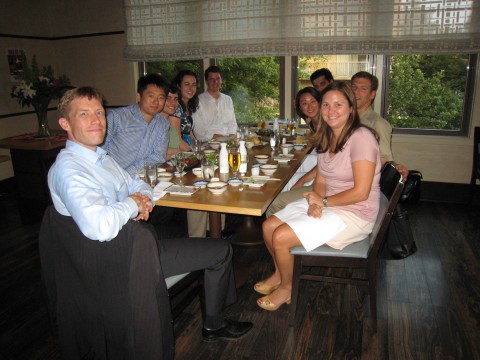
Nate Hultman, Joanna Lewis and RAEL undergraduates in Washington, DC
Biomass fuels (wood, charcoal, dung, and agricultural residues) are vital to basic welfare and economic activity in developing nations, especially in sub-Saharan Africa (SSA), where they meet more than 90% of household energy needs in many nations. Combustion of biofuels emit pollutants that currently cause over 1.6 million annual deaths globally (400,000 in SSA. Because most of these deaths are among children and women, biomass use is directly or indirectly related to multiple Millennium Development Goals (MDGs), including environmental sustainability, reducing child mortality, and gender equity.
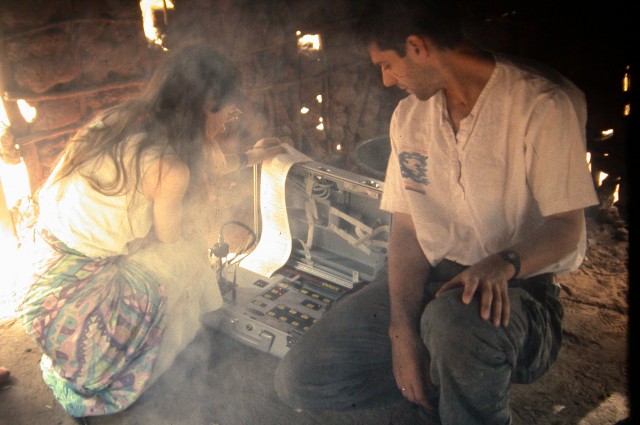
Taking indoor air pollution measurements in rural Kenya

Making charcoal, Kenya
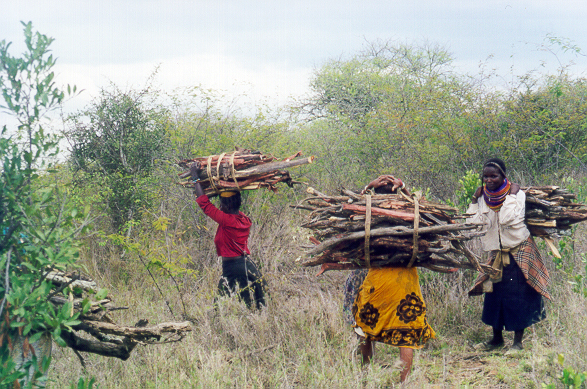
Women gathering firewood, Zombe, Kenya









You must be logged in to post a comment.